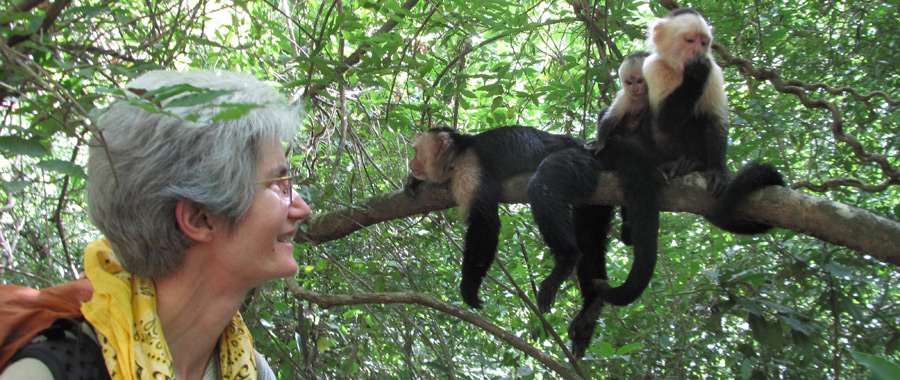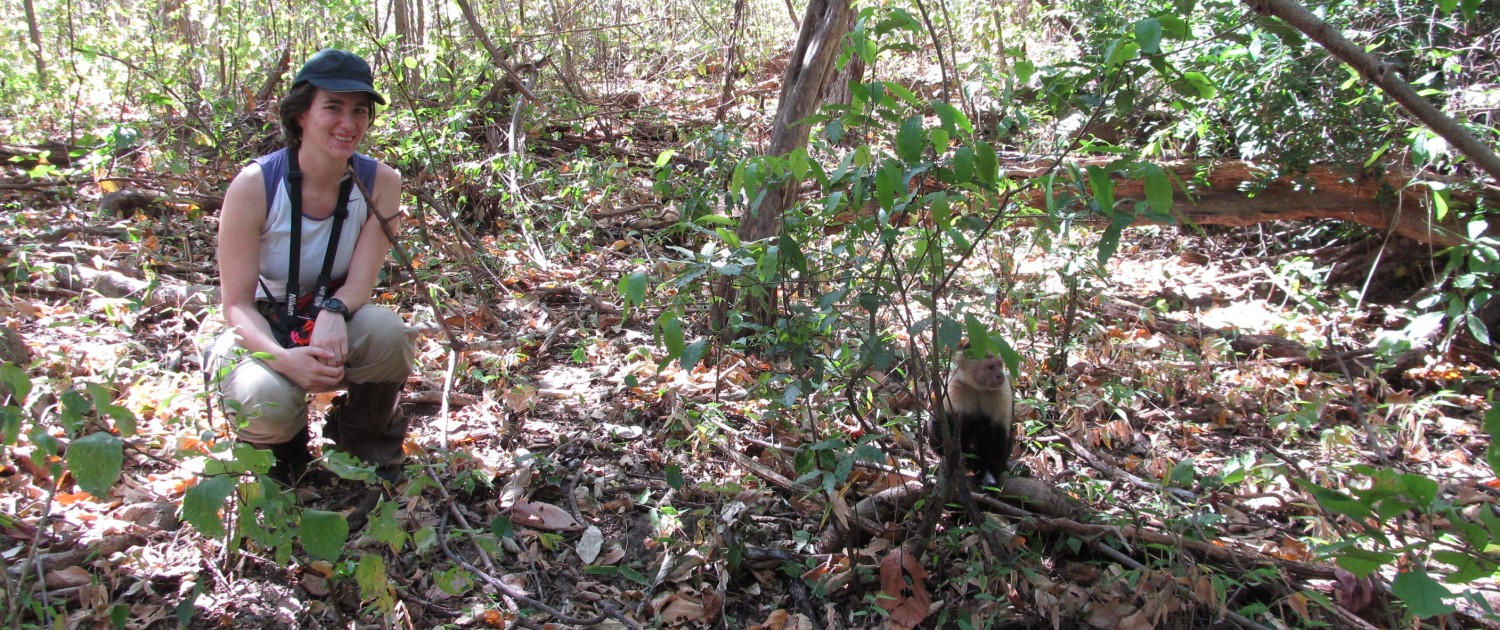The Lomas Barbudal Monkey Project
The Lomas Barbudal Monkey Project was founded in 1990 by Susan Perry, with the help of Joseph Manson and Julie Gros-Louis, for the purpose of studying social intelligence in the white-faced capuchin, Cebus capucinus, and this population has been studied almost continuously ever since. The Lomas Barbudal capuchins have become one of the most intensively studied wild monkey population in the world. Capuchins, a New World primate, are particularly good models for many human traits because they have developed many important features that warrant explanation (e.g. large brain size, social traditions, lethal coalitionary aggression, complex social relationships and social cognition, tool use, food sharing, extensive cooperation) independently of humans and the other great apes.
Capuchins are skilled extractive foragers, and social influence guides their adoption of particular foraging strategies. White-faced capuchins are known particularly for their propensity to develop unique, culturally variable bond-testing rituals. The Lomas Barbudal monkey project has focused its research most intensively on questions regarding social dynamics, communication, social traditions, development and life history strategies. This is one of very few long- term studies of primates for which there are detailed observations over the course of the lifetime for large numbers of individuals for which there is also data on genetic relatedness and lifetime reproductive success. Such data are critical for testing hypotheses about the evolution of social strategies.
For a more detailed view on the history of the site and current projects click HERE
For more information contact:
Susan Perry
Dept of Anthropology
341 Haines Hall
UCLA
375 Portola Plaza
Los Angeles, CA 90095-1553
(310)-267-4338
Susan Perry
Proyecto de Monos
Apdo 5
Bagaces, Guanacaste
Costa Rica





